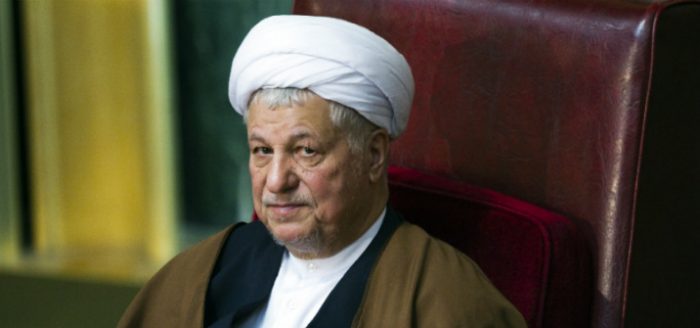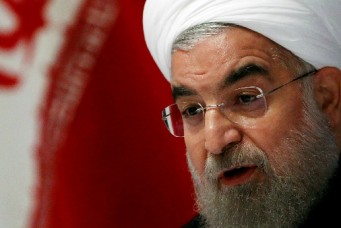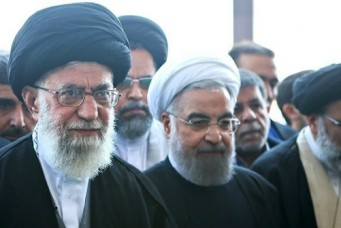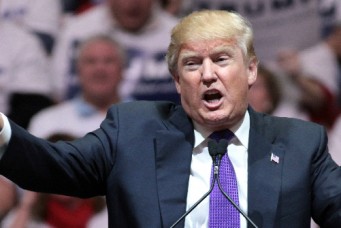The Shark from Rafsanjan
The death of Iran’s former president Akbar Hashemi Rafsanjani continues to affect the country’s political scene.

Former president Akbar Hashemi Rafsanjani at Iran’s Assembly of Experts’ biannual meeting in Tehran, March 8, 2011. Raheb Homavandi/Reuters
Utter the name of Akbar Hashemi Rafsanjani, who died on January 8, and Iranians from almost all walks of life will tell you that he was one of the wealthiest and most corrupt mullahs in the country. His initial wealth came from green gold. He was the son of a prominent pistachio merchant from the southeast of Iran, the town of Rafsanjan in the Kerman province from which he derives his last name. But he amassed much of his fortune through crony capitalism. Iranians referred to Rafsanjani as kooseh (Persian for “shark”) for his inability to grow a beard and wily knack for navigating political currents. It was easy to dislike Rafsanjani for his reputation as a corrupt theocrat, but it’s hard not to appreciate his championing of Iran’s pragmatist and eventually, reformist factions—regardless of his motivations.
If Ayatollah Ruhollah Khomeini was the founding father of the Islamic Republic, Ayatollah Rafsanjani was one of its sons. As the right hand to Khomeini, Rafsanjani managed to convince him to end the Iran-Iraq War in 1988 by accepting United Nations Resolution 598. Rafsanjani was a mentor to former reformist President Mohammad Khatami and the current pragmatist president, Hassan Rouhani. If it weren’t for Rafsanjani’s constant push for a thaw in relations with the West over the decades, the 2015 nuclear deal might not have been possible.
Rafsanjani, who was 82, wore many turbans over his four-decade political career including speaker of parliament and president from 1989-1997. However, the turban Rafsanjani seemed to covet most was that of supreme leader of Iran, the very title he helped give to Ayatollah Ali Khamenei upon Khomeini’s death in 1989. The closest Rafsanjani himself got to the position was three times being elected to the Assembly of Experts, the body that chooses Iran’s supreme leader.
Rafsanjani spent much of his presidency on post-war reconstruction and improving ties with the West and Iran’s Arab neighbors. He helped guide the economy to a free market. Filling his pocket came first, then Islamic revolutionary ideology. Rafsanjani also had an iron fist. He was repressive and, it is alleged, approved the assassinations of political dissidents at home and abroad. When Rafsanjani ran again for president in 2005, disillusion with President Mohammad Khatami’s ineffectiveness as a reformer, and his failure to back protesters during the 1999 Tehran University uprisings, as well as Rafsanjani’s reputation for corruption and repression, helped make populist hardliner Mahmoud Ahmadinejad the fifth president of Iran.
After Ahmadinejad’s disastrous first term, Iranians voted in droves in 2009 for his reformist opponent Mir Hussein Mousavi, the candidate Rafsanjani backed. Ahmadinejad’s disputed victory sparked off the Green Movement, the largest demonstrations since the 1979 revolution. Rafsanjani paid a price for opposing his longtime friend Khamenei and siding with the protesters, who not only rejected the election’s outcome, but demanded greater civil liberties. He was barred from leading Friday Prayer at Tehran University, a job he had held for years. His daughter Faezeh Hashemi, a prominent women’s rights activist, was briefly imprisoned for her support of the Green Movement. His son Mehdi Hashemi is currently serving a ten-year sentence for embezzlement. Despite being sidelined, Rafsanjani tried running for president again in 2013, only to be banned over his age by the Guardian Council, which oversees bills passed in parliament and approves candidates for parliamentary and presidential elections. Instead, Rafsanjani threw his support behind Rouhani. During the 2016 parliamentary elections, Rafsanjani endorsed the reformist “List of Hope,” that won all thirty Tehran seats. His own ticket the “People’s Experts” secured 52 of the 88 seats in the Assembly of Experts, preventing a hardline majority. In his last years, Rafsanjani was popular more than he ever was as president.
Rafsanjani’s funeral signified the depth and complexity of Iran’s post-2009 politics. A crowd of some 2.5 million gathered to pay their respects to Rafsanjani—the largest gathering since Khomeini’s funeral in 1989—yet Rafsanjani’s own family was on the sidelines, while the political establishment took front row seats at the spectacle. Rafsanjani was honored with a burial next to the founder of the revolution Ayatollah Khomeini, whose own family was also cast aside after his death—something now expected to happen to Faezeh, Mehdi, and the rest of the Rafsanjani clan. Khatami and Green Movement leaders—Mousavi, his wife Zahra Rahnavard, and Mehdi Karroubi, all under house arrest since 2011—were banned from attending the funeral.
But in the background of the funeral were chants of “Ya Hussein, Mir Hussein” as well as “Long live Khatami,” and countless other defiant chants from Iranians, some of whom had worn green wristbands and t-shirts as a showing of solidarity with the Green Movement leaders. State media tried to drown out people’s chants with loudspeakers, but were met with chants of “Loudspeakers are yours; the voice of justice is ours!” and “Our message is clear: house arrests must end.” Social media helped the public displays of dissent go viral. And even at Rafsanjani’s seventh day memorial, the chants continued. It was a reminder Iranians hadn’t forgotten 2009. The people still demanded reform.
Rafsanjani was part of a generation of dying mullahs who founded the Islamic Republic. His death is a blow for the moderates locked in a constant tug-of-war with hardliners for Iran’s future. Even though Rafsanjani’s power waned, he was one of the only powerful public figures granted free reign to criticize the establishment when he felt necessary.
Holly Dagres is the curator of the weekly newsletter The Iranist and a contributing editor at the Cairo Review of Global Affairs.
Subscribe to Our Newsletter





